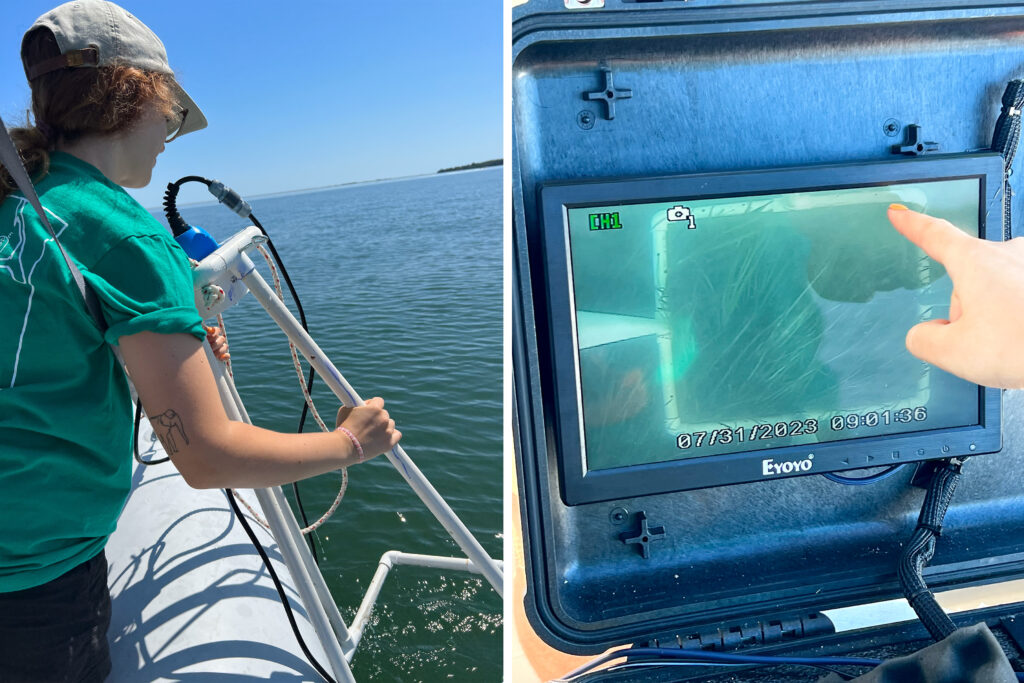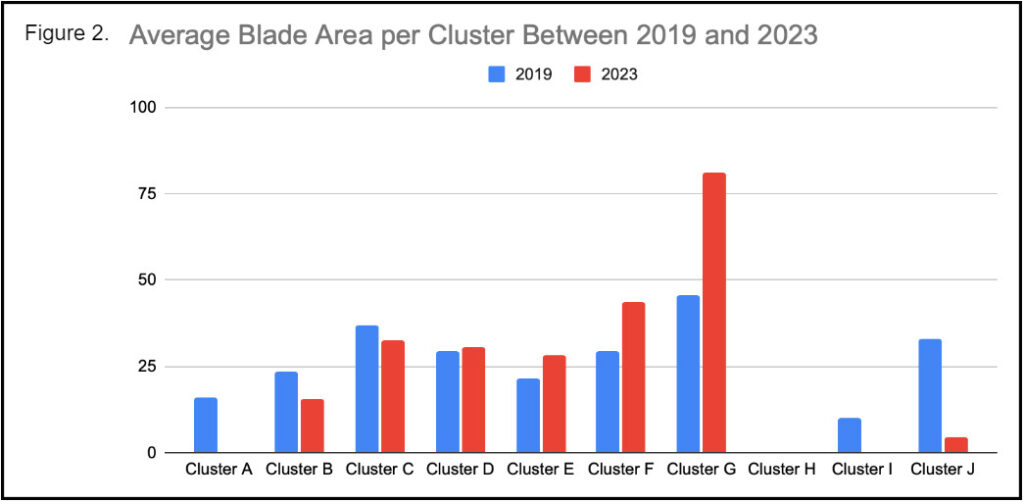 The 2023 eelgrass surveys in Duxbury, Kingston, and Plymouth bays were highly successful, with eight sampling days between July 21st and August 21st. In total, eight boat captains and 12 citizen scientists participated, assisting 5 NSRWA staff members to collect the data. The 119 sampling stations were divided into 10 clusters that grouped sample sites by geography. The eelgrass sampling entailed dropping a camera attached to a PVC quadrat frame to take pictures of the bottom at the four corners of the boat at each site. Up on the boat, staff and volunteers recorded percent cover of eelgrass using those images. At most sites that had eelgrass, samples were also collected using an anchor or a snorkeler, and the grass blades were measured and assessed for growth of organisms on the surface (epibionts) as well as eelgrass wasting disease, which causes the grass blade to turn black and die.
The 2023 eelgrass surveys in Duxbury, Kingston, and Plymouth bays were highly successful, with eight sampling days between July 21st and August 21st. In total, eight boat captains and 12 citizen scientists participated, assisting 5 NSRWA staff members to collect the data. The 119 sampling stations were divided into 10 clusters that grouped sample sites by geography. The eelgrass sampling entailed dropping a camera attached to a PVC quadrat frame to take pictures of the bottom at the four corners of the boat at each site. Up on the boat, staff and volunteers recorded percent cover of eelgrass using those images. At most sites that had eelgrass, samples were also collected using an anchor or a snorkeler, and the grass blades were measured and assessed for growth of organisms on the surface (epibionts) as well as eelgrass wasting disease, which causes the grass blade to turn black and die.
The last year that NSRWA and MassBays were able to complete the entire survey was 2019, so that was the main point of comparison for the 2023 data. Overall, eelgrass coverage at two of the clusters increased by about 5%. Seven clusters declined in eelgrass coverage, between 0.2% and 24%. One cluster that has only one site with eelgrass remained the same. (Figure 1).
One of the most surprising results was the increase in eelgrass blade length in four of the clusters, which had average blade lengths that were 14.9-45.2 cm longer than in 2019 (Figure 2). One cluster had a decrease in average length of 11.5 cm. It is still being determined at this point why the eelgrass was so much longer in 2023; further analysis based on location is needed. Wasting disease incidence has not increased between the two years, and epiphyte coverage has decreased.
We are extremely grateful to our volunteers and volunteer boat captains, and especially to Isaac Mann, who led the eelgrass surveys this summer, compiled and analyzed the data, and wrote the report that is summarized above. This project was funded through Mass. Division of Marine Fisheries with funds from Veolia.


